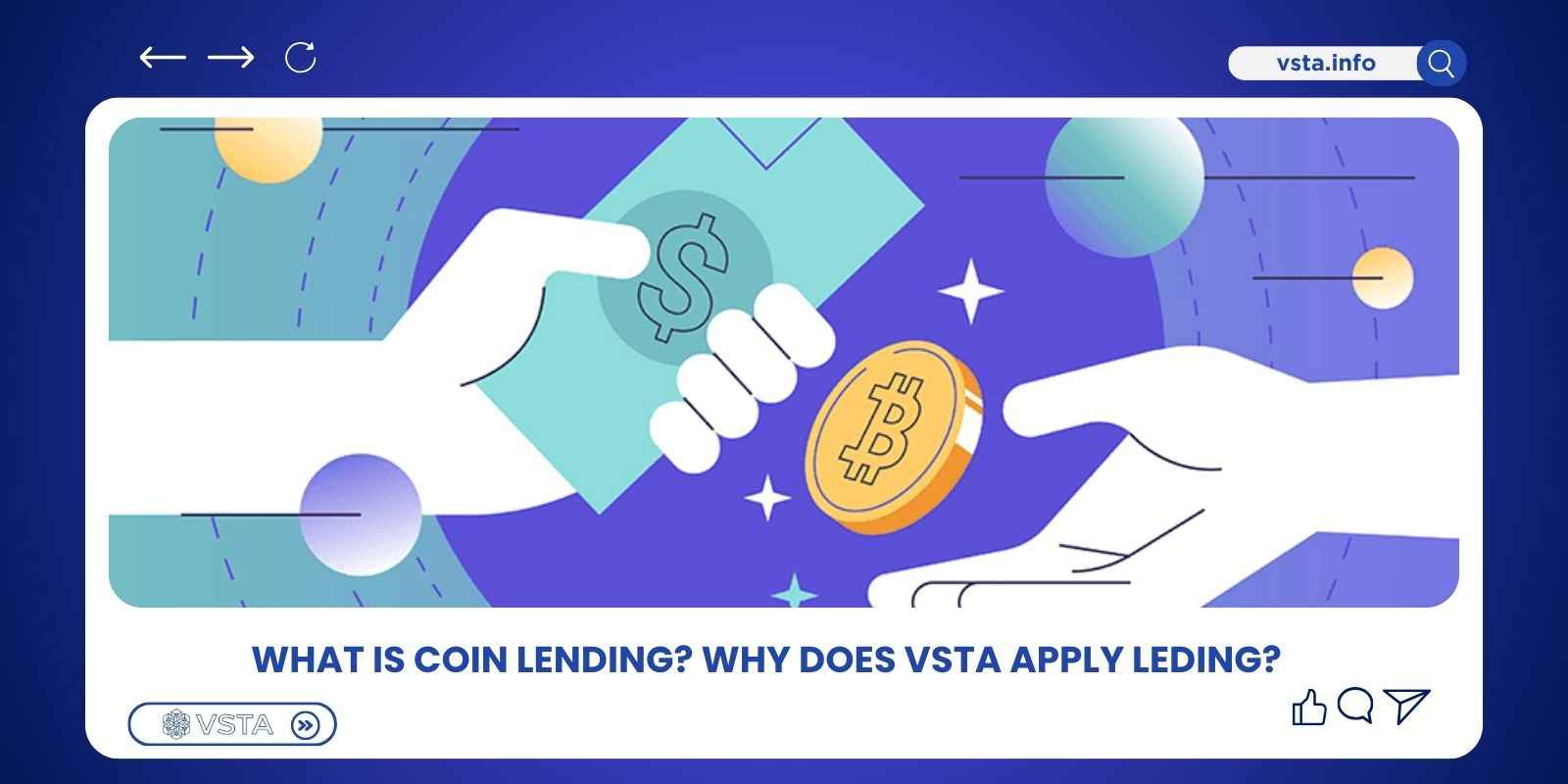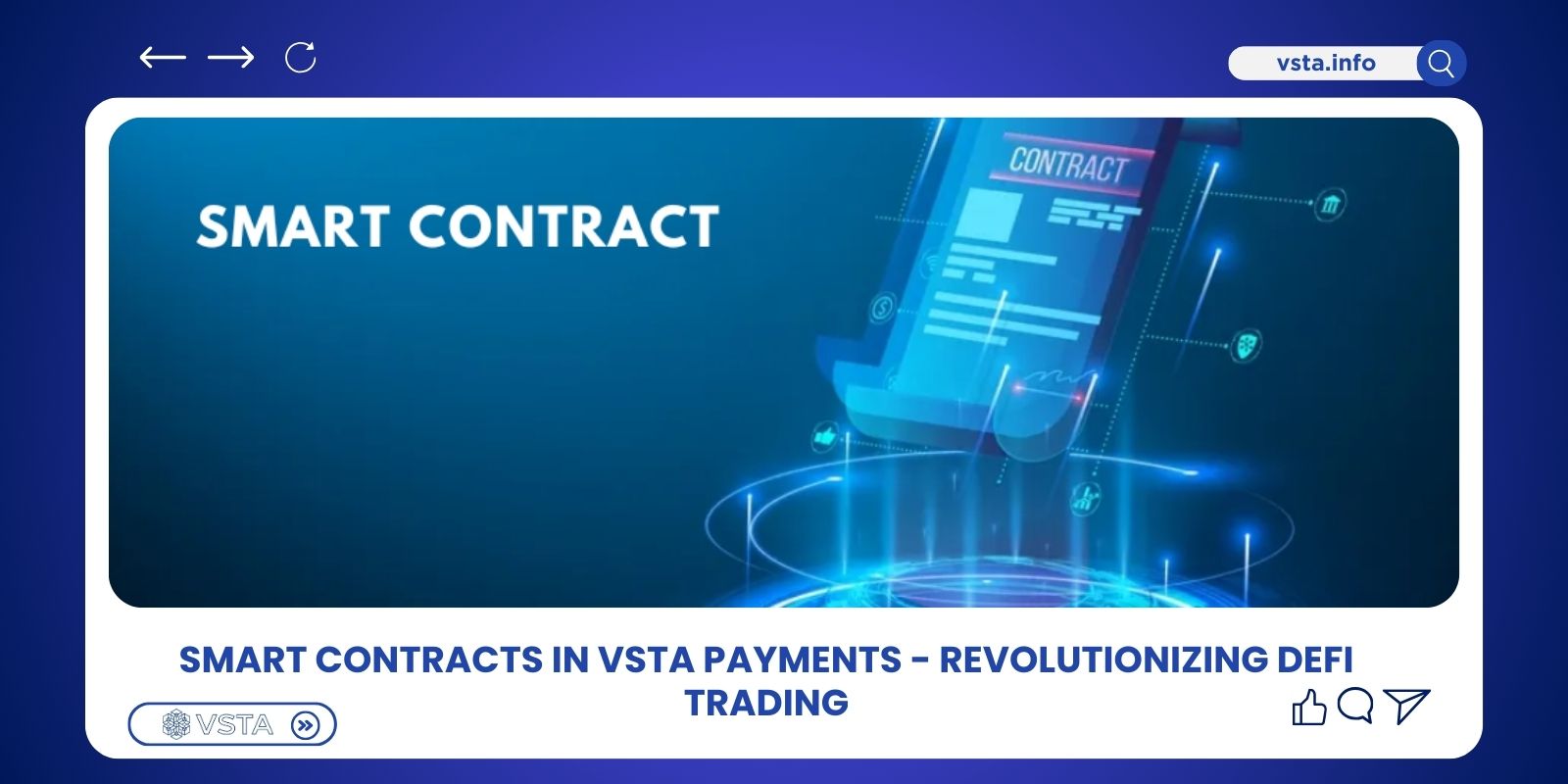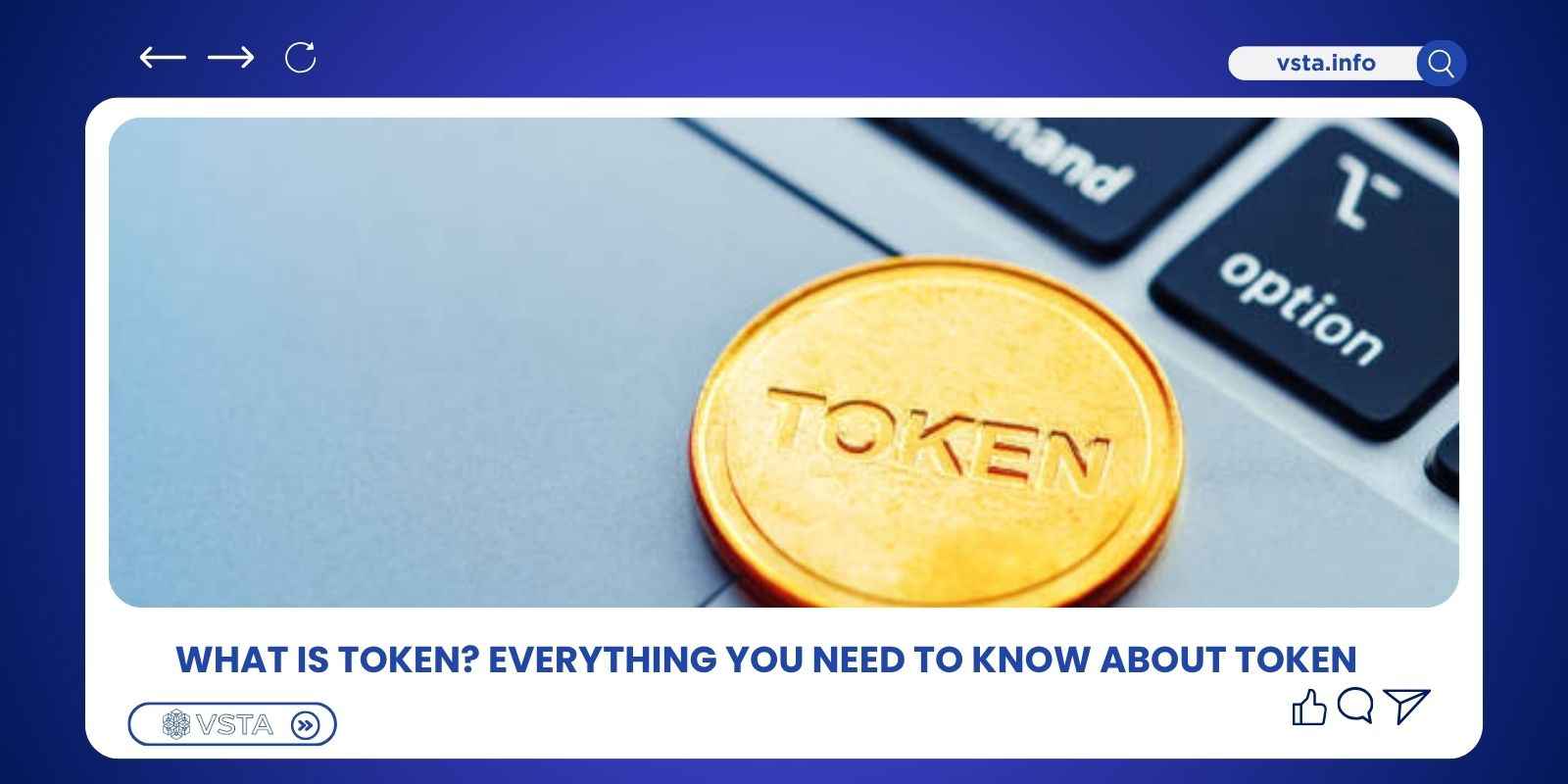Coin Lending is emerging as a new and highly promising investment trend in the cryptocurrency market in general, and in VSTA in particular. It has attracted significant attention from long-term traders. So, what is Coin Lending? What key metrics should you pay attention to when lending coins? Let’s explore this together with VSTA.Info.
What is Coin Lending?
Coin Lending is the practice of lending your cryptocurrency assets to others in order to earn profits. In other words, you can “deposit” your crypto on lending platforms and receive interest in return. The interest rate may vary depending on the type of cryptocurrency, the lending period, and market demand.
To better understand Coin Lending, let’s look at an example: Suppose you have 100 BUSD and want to participate in Coin Lending on Binance with an annual interest rate of 10% for 14 days. After 14 days, the investor will receive:
- Principal: 100 BUSD
- Interest = Principal × Interest Rate (%) × Time (year) / 1 year = 100 × 10% × 14/365 = 0.5283 BUSD
- Total Return = Principal + Interest = 100 + 0.5283 = 100.5283 BUSD
Result: After 14 days of participating in Coin Lending, you will receive 100.5283 BUSD, including both the principal and the interest.

Types of Coin Lending
Currently, Coin Lending in the crypto market is divided into three main types: P2P Lending, Over-Collateralized Lending, and Under-Collateralized Lending.
The Over-Collateralized Lending and Under-Collateralized Lending models operate through a Lending Pool. Lenders provide coins to the pool to create liquidity and earn interest. Borrowers pledge collateral, then borrow coins from the pool and pay interest depending on the type of asset.
P2P Lending
P2P Lending (peer-to-peer lending) is a model that directly connects borrowers and lenders through a technology platform, eliminating the intermediary role of traditional financial institutions. Thanks to Smart Contracts, the lending process is automated, ensuring transparency, security, and cost savings.
Key advantages of P2P Lending:
- Lenders can set their own desired interest rates for loans, while borrowers can choose loan options that fit their financial capacity.
- Eliminates intermediary fees from banks and financial institutions, reducing costs for both lenders and borrowers.
- Borrowers gain easier access to capital from multiple investors, instead of relying solely on banks.
- Smart Contracts ensure transparency throughout the entire lending process, from contract signing to disbursement and repayment.
- Lenders can withdraw funds at any time, and borrowers can repay loans ahead of schedule.
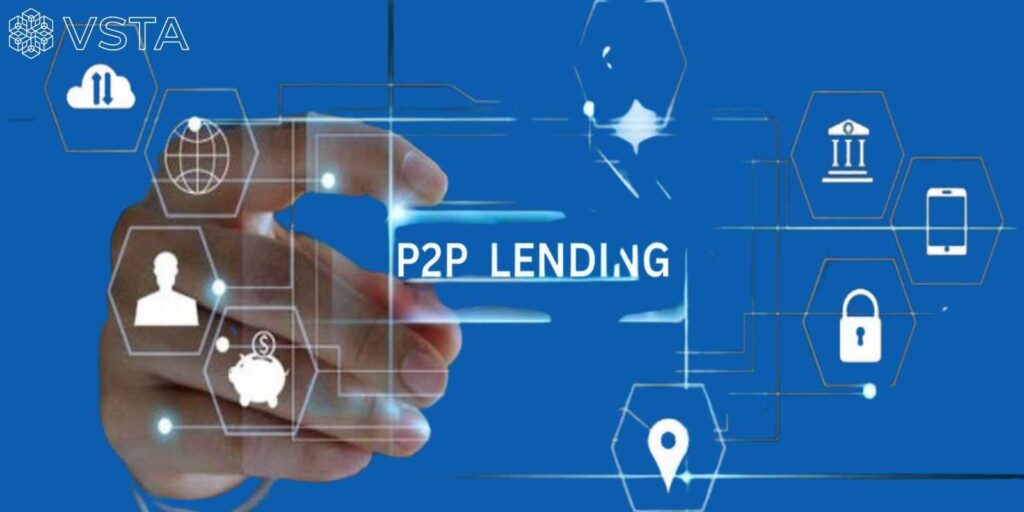
Over-Collateralized Lending (OCL)
In Over-Collateralized Lending (OCL), borrowers pledge collateral with a value greater than the loan amount. This mechanism helps reduce risk for lenders. If the borrower defaults, the collateral will be liquidated to recover the funds.
Key advantages of OCL:
- OCL allows investors to maximize the potential of their assets, turning “idle” assets into a source of profit.
- Combining OCL with investment strategies such as Futures trading helps investors optimize profits from market volatility. Example: Deposit BTC on FTX and borrow USD to trade Futures. When BTC price rises, you gain profit both from the increase in BTC’s value and from the Futures position (if successful).
- Collateral assets can be easily converted into cash when needed.
Under-Collateralized Lending (UCL)
In contrast to OCL, Under-Collateralized Lending (UCL) requires borrowers to pledge collateral smaller than the loan amount. While lenders face higher risks, they are compensated with higher interest rates.
Potential advantages of UCL:
- UCL enables borrowers with limited collateral to still access capital for investment or business.
- It allows borrowers to use their assets more efficiently, optimizing returns from various investments.
- UCL helps expand the lending market and creates opportunities for broader participation.

How VSTA Applies the Lending Model
VSTA integrates the lending model into its DeFi ecosystem to create a sustainable and efficient financial infrastructure. The approach works as follows:
Collateralized Lending with Crypto Assets
Users can deposit supported crypto assets (such as ETH, USDC, or other tokens) as collateral to borrow the stablecoin VST. This ensures transparency and security while allowing users to unlock liquidity without selling their long-term holdings.
Stablecoin-Centered Lending (VST)
The VST stablecoin is the core of VSTA’s lending model. It provides borrowers with a stable, low-volatility currency for transactions, while lenders earn yield by supplying liquidity to lending pools.
Staking & Restaking for Enhanced Liquidity
VSTA token holders can stake or restake their tokens, contributing to the platform’s liquidity and security. In return, they receive attractive rewards, creating a cycle that reinforces both lending and the broader ecosystem.
Decentralized Governance via DAO
All major lending parameters-such as interest rates, collateral ratios, or supported assets-are governed by the community through DAO voting. This ensures fairness, decentralization, and long-term sustainability.
Through this model, VSTA transforms lending into more than just a borrowing mechanism-it becomes a driver of liquidity, user adoption, and ecosystem growth.
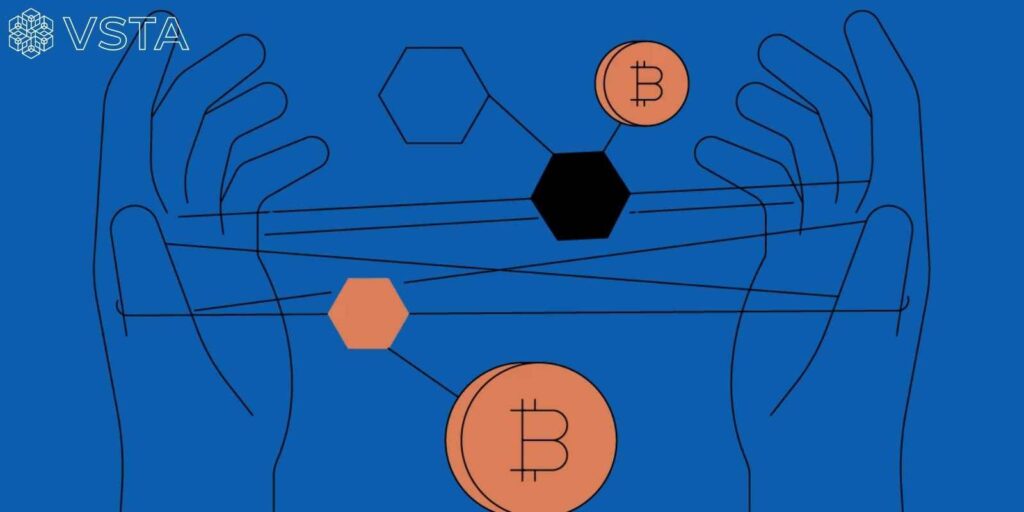
Key Metrics to Consider in Coin Lending
No matter which platform you choose for Coin Lending, it’s essential to understand the following metrics in order to make wise decisions and maximize profits:
Lending Interest Rate: This is the most important factor attracting investors to participate in lending. It represents the profit they will earn when lending out one unit of coin/token. Lending interest rates are usually calculated as an annual percentage (%).
Lending Time: This refers to the period during which the investor’s assets are locked for lending, starting from when the loan begins until it ends and both principal and interest are returned. Platforms often provide flexible lending durations such as 7 days, 14 days, 28 days, 30 days, or 90 days.
Lending Assets: The variety and number of assets available for lending give investors more options. At the same time, diversification helps lenders reduce risks and optimize returns.
Lending Total Value Locked (TVL): TVL reflects the total value of assets used for lending activities on the platform. A high TVL indicates strong user participation and interest, which attracts new investors. It also builds trust in the platform’s liquidity and safety.
Pros and Cons of Coin Lending
Coin Lending is a promising method with many advantages, but it also comes with risks that need to be carefully considered before participating.
Pros
Coin Lending offers several notable benefits:
- Utilizing idle assets: Lending allows you to turn the cryptocurrencies you hold but don’t frequently use into an effective income-generating tool. Instead of letting your assets “sit idle” in a wallet, you can lend them out and earn interest over a set period of time.
- Flexible lending terms: Lending platforms provide various options for loan durations, from short-term to long-term. This flexibility enables investors to allocate assets more efficiently and better meet their personal financial goals.
Cons
The main risk you need to pay attention to in Coin Lending is price volatility. The crypto market is well-known for its unpredictable and significant price fluctuations. During the lending period, the value of the coin you lend could drop sharply, making the interest you earn insufficient to offset the losses caused by the price decline.
Conclusion
We hope the information shared in this article helps you gain a clearer understanding of what Coin Lending is. This method can provide attractive passive income opportunities, but investors should carefully weigh the risks before getting involved. If you want to increase profits safely, follow VSTA.Info for the latest updates and insights.
